The elusive Joe Hage. Courtesy of Kenny Schachter.
I was at a gallery the other day when someone cast a glance in my direction and said to a friend, “Isn’t that the NFT guy?” Yes, I may very well be that—but it doesn’t mean I’m not still privy to meatspace scoops every so often. Though both parties have repeatedly refused to comment, an analog birdie whispered into my ear that soon to be ex-Sotheby’s colleagues Amy Cappellazzo, the longtime chair of the auction house’s fine art division, and Yuki Terase, head of contemporary art in Asia (and known to be a powerhouse in the region), will join forces to conquer the art world even more than they already have. I wonder if they need an assistant.

An old favorite from a few years ago. It’s only a matter of time… for me and the Hauser empire. Courtesy of Kenny Schachter.
Hauser & Wirth is opening yet another space (an art gallery, not a new hotel/food court) across from Zürich’s famed Baur au Lac Hotel on Talstrasse, smack in the middle of the city—their sixth in Zürich alone, and 17th overall at last count. I am waiting to reserve my place in the sure-to-follow Hauser hospice when my time comes. In other mega-gallery news, Katherine Bernhardt is about to begin representation by David Zwirner Worldwide Incorporated, launching her first show in April 2022 in London with the gallery, which now sports only six physical locations in three countries but is conquering the online universe along with other multimedia incursions led by scion Lucas Zwirner. David even trekked to St. Louis to court the painter, but I wouldn’t bet on a Zwirner satellite into the city better known for beer and baseball.
Meanwhile, when it comes to hybrid NFT/old world convergences, Beeple is rumored to be on the verge of signing with Pace, though president and CEO Marc Glimcher denied any deal was done, stating: “Had a great lunch with him but that’s as far as we got so far.” Let’s see. It’s possible the recent shambolic Zwirner podcast featuring Beeple and Jordan Wolfson was an indication of another suitor on the trail. (As for that podcast episode, it’s too mindbogglingly disconcerting to characterize, so have a listen for yourself.)
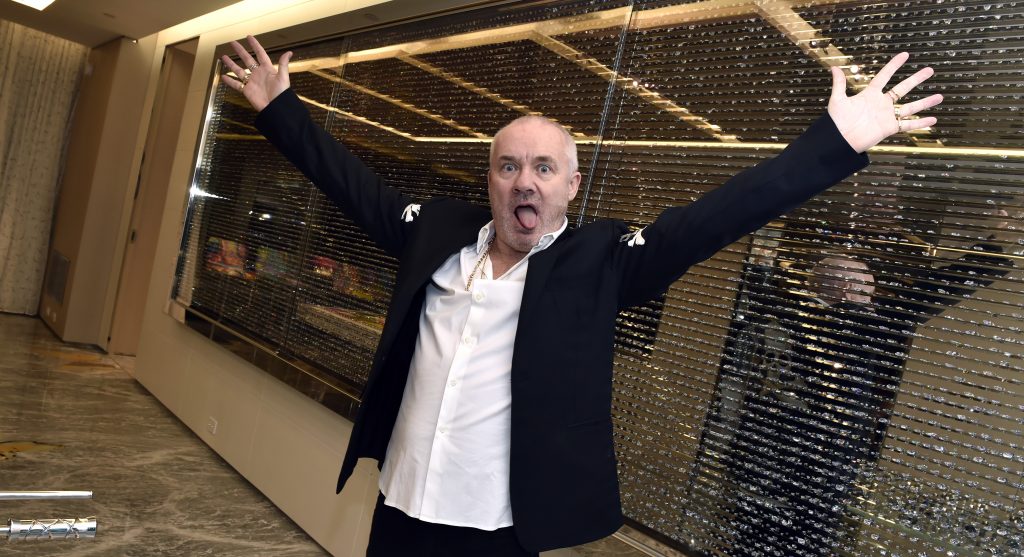
Artist Damien Hirst attends the The Empathy Suite designed by Damien Hirst unveiling at Palms Casino Resort on March 01, 2019 in Las Vegas, Nevada. (Photo by David Becker/WireImage)
And then there is Damien Hirst and the Currency, his upcoming drop of 10,000 NFTs wedded to “unique” paintings on letter-sized paper, which has been delayed from entering the stream of commerce due to the fact that Palm founding partner ConsenSys is a US-based company and must therefore avoid running afoul of financial regulatory issues associated with creating what in effect are securities substitutes (more than art as we knew it). The first 10 from the project will be auctioned off (the NFT community values the earliest numbered editions the highest) with the remainder released in tranches starting at approximately $2,000 each. Clusters will be saved for crypto clients of various exchanges like uniswap.org and SushiSwap (sushi.io), which bills itself as a place where you can “swap, earn, stack yields, lend, borrow, leverage all on one decentralized, community driven platform.” Welcome to Art World 2.0.
Team Hirst, led by below-the-radar art market impresario Joe Hage, a lawyer/arbitrator/tax advisor/art advisor/estate advisor/financial advisor/art dealer/print publisher (i.e., the only person in art with more hyphenates than me), hired a group of Oxford- and Cambridge-educated quantitative programmers to reverse-engineer scarcity in the edition, looking for mathematical anomalies after the works were made (with the assistance of Hirst’s little helpers no doubt) to single out pieces to assign higher values. For example, if the color bled through the paper surface of particular examples, or if distinct color combos were prevalent, that work’s price would rise. This ex-post-facto pseudo rarity is closer to generative computer-game shenanigans than what distinguishes a great work of art. The gross (multiple meanings of the word apply) valuation of Hirst’s currency is targeted at no less than $500 million. Gone are the days when art was discussed as a substitute for money—now art is money. Even my youngest, Sage (18 years old), has launched his own Sage Coin. When I queried how he did it, he replied: “I have a guy.”
Illustrative of the recently reported monster market decline in NFTs since March, my NiftyGateway drop on May 18 (my third after making my debut in December 2020, eons ago in tech time) sold 72 pieces from four separate editions, while in February I sold 533 pieces from five distinct editioned works. There was a commensurate diminution in the total sales achieved from over $300,000 (including simultaneous flips) to about $30,000. But I’m still a contender, not out of the game yet—every work from an edition of five resold between $6,000 to $8,000, with four iterations going to one collector known as CL7 for some reason. Open editions, where as many works as possible are sold within a designated period of time before they are capped, are now a thing of the past ever since the resales came to a halt for oversized edition runs—other than for obvious works by obvious artists. In other words, the NFT sector has quickly grown to mimic the traditional art market.
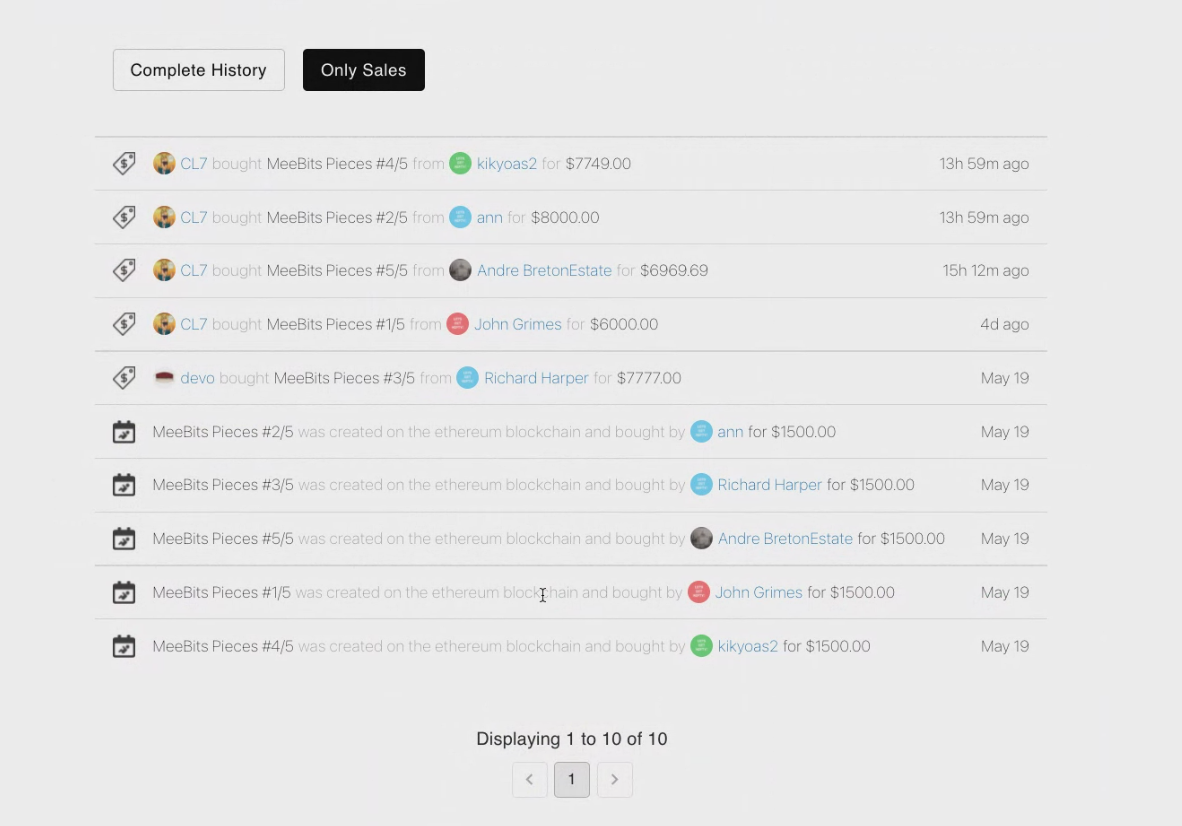
Whoever you are, CL7, thanks! I trust you will enjoy your four copies of my piece “MeeBits Pieces,” whatever your ultimate motive. Courtesy of Kenny Schachter.
By the way, the notion of artist residuals from NFT sales reverting back to artists in perpetuity is a fallacy, as you are only remunerated when NFTs are re-traded on the same platforms where they were initially sold. I hope this recent downturn doesn’t portend me having to jump back on the hamster wheel chasing art fairs and auctions to make a living. I guess I will have to spend my summer as a guest in the Bored Ape Yacht Club in the metaverse rather than cruising the Mediterranean. In any event, look for my Hoarder 3 auction coming next December at Sotheby’s London.
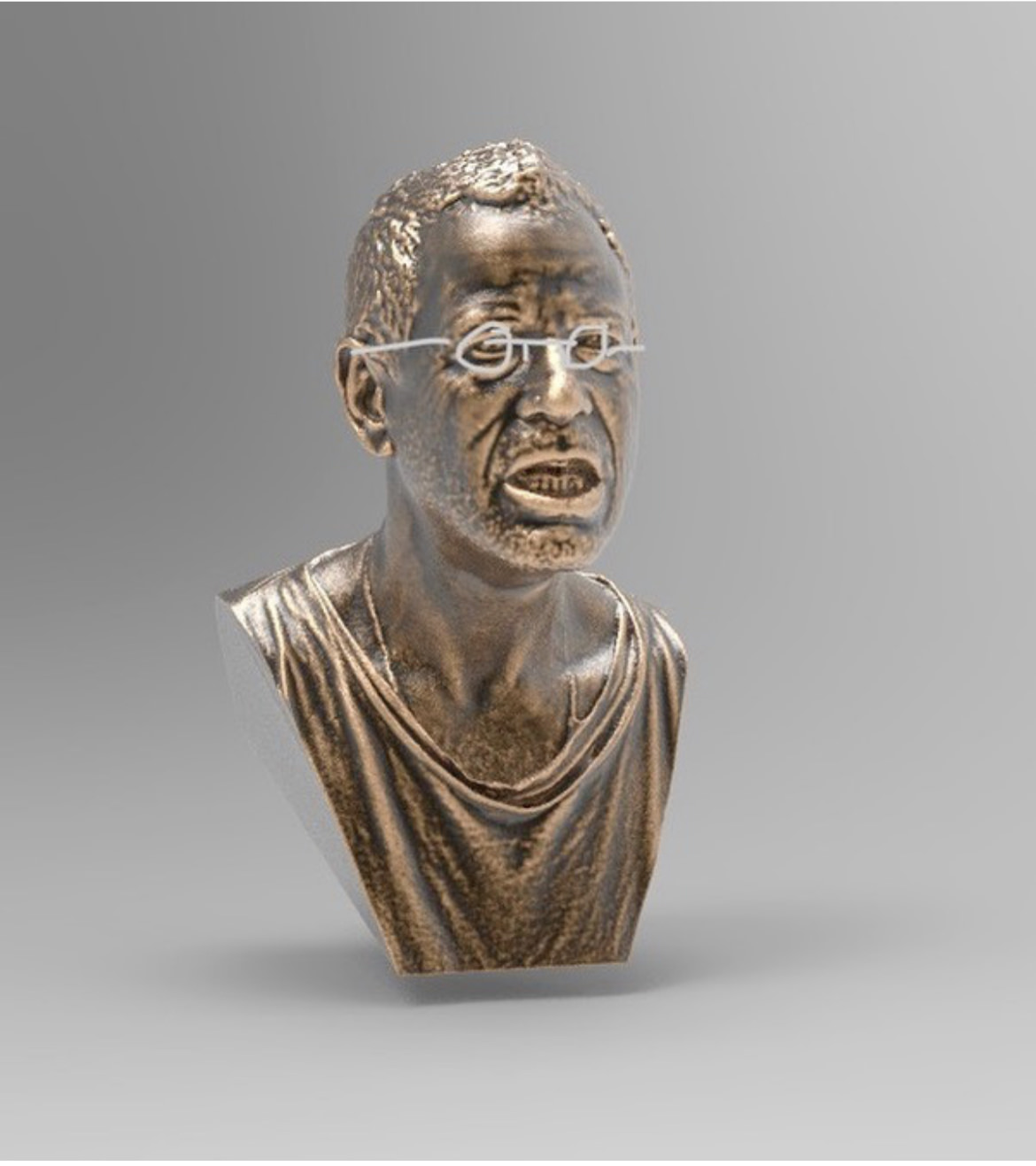
Living death mask after Franz Xaver Messerschmidt (real pair of glasses included) NFT redeemable as 3D printed bronze—coming soon to Super Chief Gallery. Courtesy of Kenny Schachter.
That said, if anyone is feeling gleeful that the NFT downturn means the demise of this new format, I have some bad news for you—Instagram is about provide its own (oh no, another!) NFT platform, meaning the tech heavyweights are only beginning to put their muscle behind the medium. At the same time, there is also a trend underfoot where NFT buyers are beginning to demand some form of physical token beyond the digital version alone. Seems a fast full circle where NFTers want to get back to whence this all departed. Uniting these two trajectories? NFT as the most exciting mediumistic art development in generations.
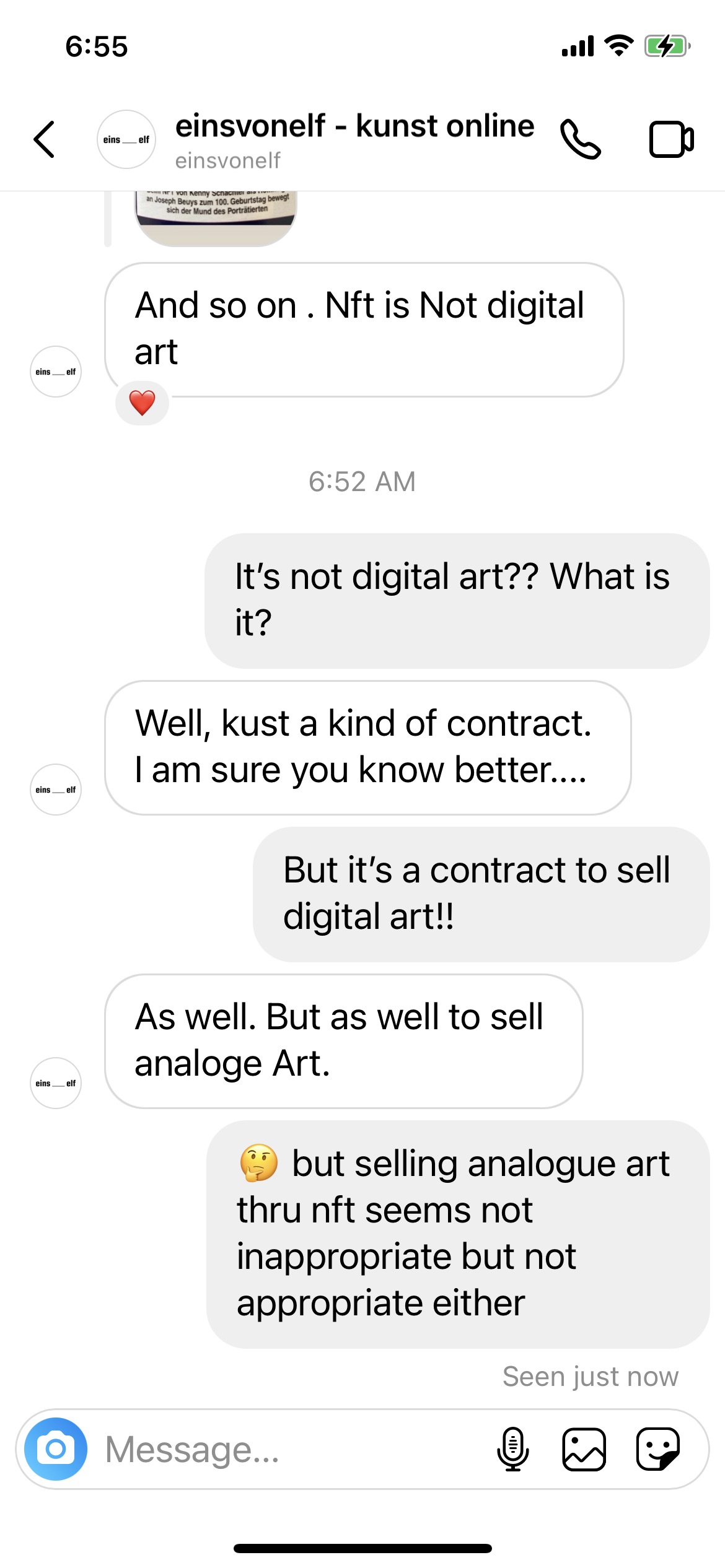
Silly me, I thought NFTs were only to disseminate digital art into the stream of commerce, but it’s more of an end all, be all! Courtesy of Kenny Schachter.
Elsewhere in the crypto kingdom, Manifold is a next-gen company providing a glimpse into the evolution of NFTs, in turn extending the functionality of the underlying art itself. (You may know them as the company that helped Mad Dog Jones make a custom smart contract for his artwork sold at Phillips, which kicks off subsequent random new pieces until if and when the ‘copy machine’ simulated in the art gets ‘stuck.’) By engineering smarter smart contracts, creators can do much more than simply mint visual and audio NFTs, customizing the framework to introduce mechanics that enable NFTs to transform over time based on external occurrences like weather or market fluctuations or link to third party platforms to form collaborations. In an example of a another shift that will contribute to make this whole process more economically viable, the crypto exchange Binance (which, founded by Chinese-Canadian Changpeng Zhao, became the largest on the planet in just under 180 days) will begin a forum to mint, buy, and sell NFTs, cutting out additional links in the chain that result in fees on fees.
In other news from the continuing collision of NFTs with museums, the Francisco Carolinum in Linz, Austria will soon present “Proof of Art,” billed as “the world’s first museum exhibition on the history of NFTs in art,” which has been curated by Jesse Damiani and runs through September. The show will be viewable in the museum and also online in Cryptovoxels, a crypto-based virtual world. As far as the artworks by 25 artists being featured in the show, a press release states: “Using the media of projection, software, videos, installations and digital files, they explore systems of meaning and value, examine the role artists play in a high-tech environment, and discuss the impact of virtual spaces on our everyday reality.”
I am still working on Metropolitan Museum of Art director Max Hollein, who I bumped into in Central Park and then promptly subjected to a diatribe on why the Met should join Florence’s Uffizi in issuing NFTs rather than continue scrambling to make ends meet. Poor Max is still recovering I bet. In the same vein, I called Larry G. to see if he’d be interested to let me curate another NFT exhibit for his art empire, to which he replied, “I have a different kind of gallery.” Oh well, never hurts to ask.
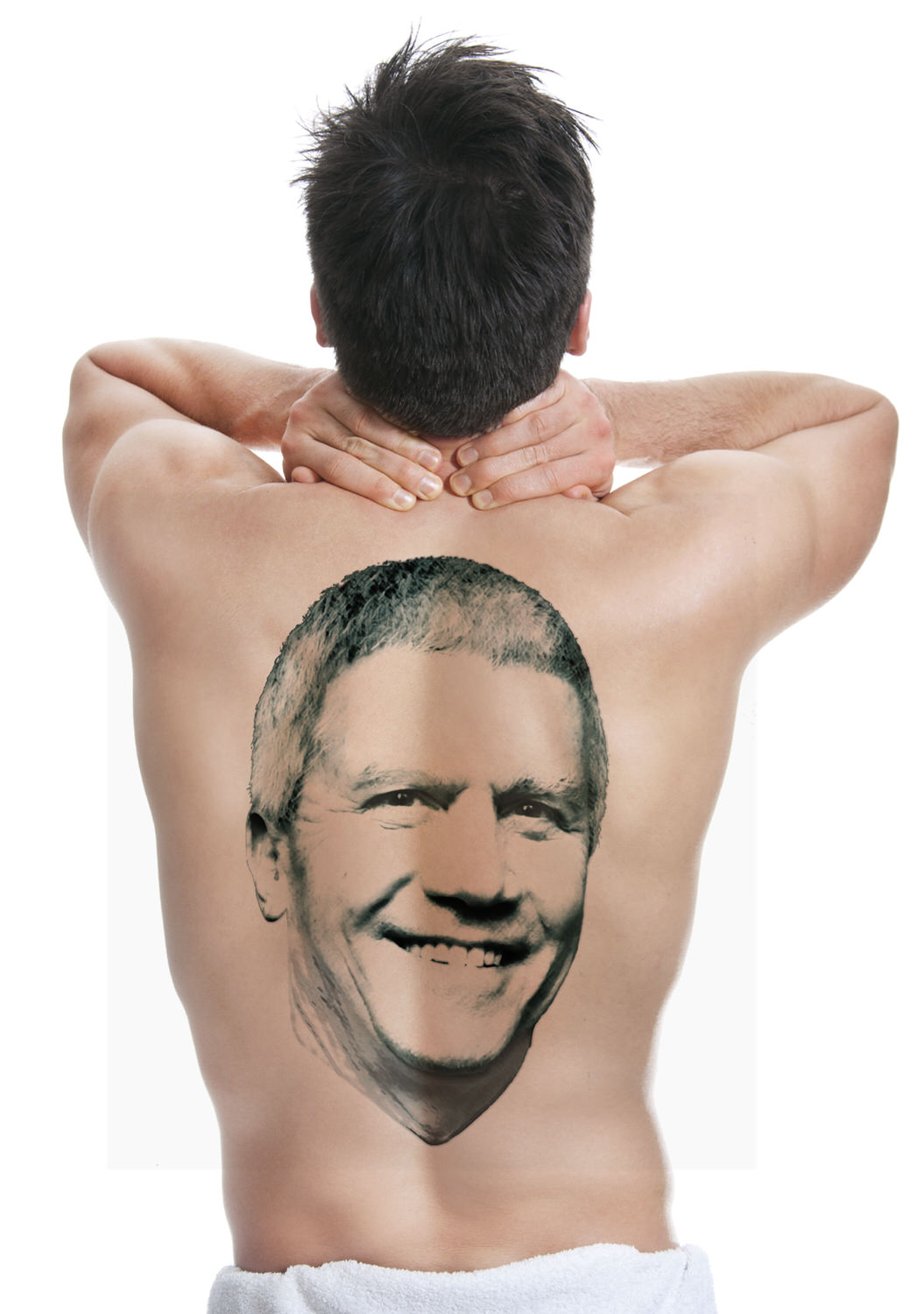
Larry G. says not for me! I got your back—or was it I got you on my back? Courtesy of Kenny Schachter.
Everywhere I’ve gone over the last six months (and 32 Covid tests), from Vienna to Cologne to London to Zürich to Florence and back, the conversations (and fights) I’ve had have always touched upon NFTism. It’s a fait accompli. I even wrote and recorded a song about it—music video/NFT in progress—for which I apologize in advance. And just as no two experiences of Covid have ever been described to me as exactly the same, neither has my definition of the blockchain ever matched up with anyone else’s. But I’m no technophile, just a forward-thinking lover of all things art. As someone put it to me in a DM, NFTs are not just about digital art but also a means for analog artists to reach new audiences, and “for artists not represented in the grey haired old fashioned art market, a super alternative.” Even better, my NFT proselytizing was the impetus for an art advisory service to launch an NFT benefitting the artist in question (Jordan Eagles) together with Visual AIDS and the Lesbian, Gay, Bisexual & Transgender Community Center. That is more satisfying than I can express, and reason alone why I’ll never stop.
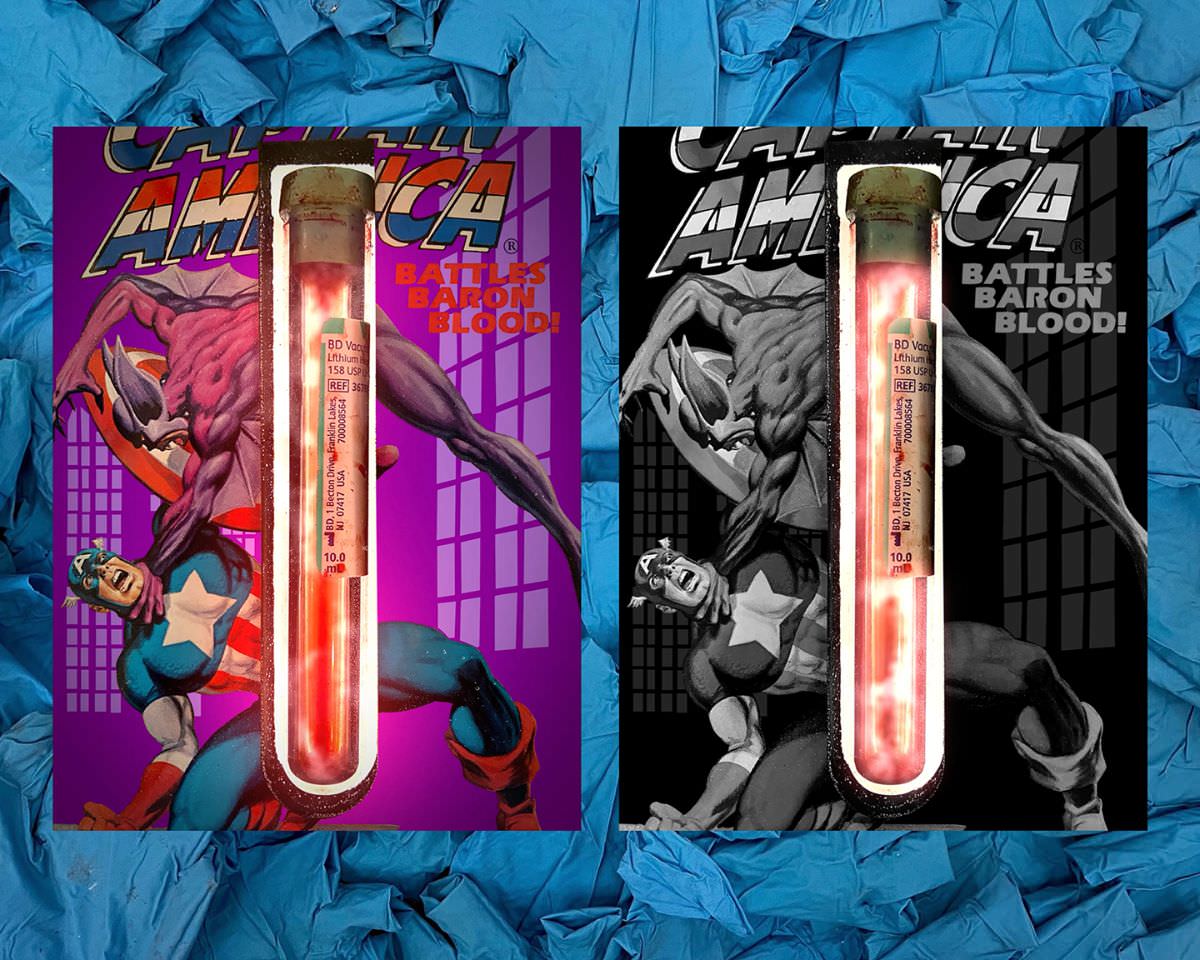
For Pride Month and in advance of World Blood Donor Day, artist Jordan Eagles created a “Queer Blood America” NFT based on a Captain America comic book from 1982 that has been laser-cut and holds a tube of queer blood. My nonstop grandstanding was said to be the driving force behind this new NFT released on Foundation. Courtesy of Kenny Schachter.
Speaking of expressing myself, here’s that song I wrote (click here to listen to its full audio glory):
Money, money, money, money, money
I’m so sick and tired of the NFT divide
Just you wait for the shifting tide
All the pushback about crypto crime
Laundering, tax evasion then there came Grimes
The currency whipsaws with a whole lot of volatility
Sit back, enjoy the ride and drop the hostility
But what about the history of digital art?
Let’s not forget what gave nifties their start
Forget the grift it’s no more or less
Than what you find in the art world
No cause for distress
Yes Bitcoin mining sucks lots of juice
Just wait for EHT 2 to end the abuse
Energy consumption’s on everyone’s mind
Airplanes, oil paints, and shipping crates
Are you all blind?
This is no more about money than any old painting
Relax! Stop fighting! no need for fainting
Don’t judge the market by the likes of Beeple
Lord knows there’s so many better people
The genie’s out of the bottle
The ETH is in the ether
Get out in front, don’t end up beneath her

